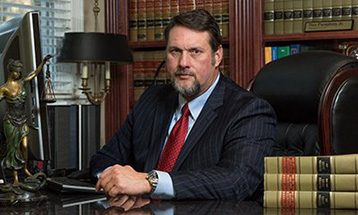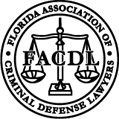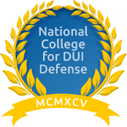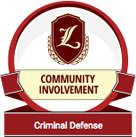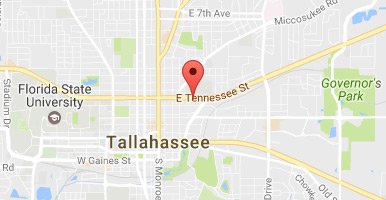- DUI
- Criminal Defense
- Florida DUI
- Traffic Offenses
- Drug Charges
- Marijuana Charges
- Violent Crimes
- Domestic Violence
- Temporary Injunctions
- Weapons Charges
- Theft Crimes
- White Collar Crime
- Juvenile Offenses
- Sex Crimes
- Violation of Probation
- Early Termination of Probation
- Seal or Expunge Criminal Record
- Criminal Appeals
- US Federal Offenses
- Misdemeanor Charges
- Felony Charges
- Co-Defendant Cases
- College Student Defense
- College Student Hearings
- FSU Students
- FAMU Students
- Florida Panhandle Arrests
- Extradition to Florida
- Bench Warrants / Warrants
- Emergency Bond Hearings
- Gambling Charges
- Drone Arrests
- Marsy’s Law
- UAS Infractions
- Introduction of Contraband
- Lying to Police
- Locations
- Case Results
- Our Firm
- Media
- Resources
- Blog
- Contact Us
Defense Seeks One Trial for Four Seminole Heights Killings
October 13, 2022 Don Pumphrey, Jr. Criminal Defense, Violent Crimes Social Share
Four shootings in 2017 shook the community of Tampa, with worries of an ongoing serial killer. Now that the accused killer has been arrested, the trial is getting ready to begin. Several motions have been filed by the defendant’s defense regarding whether or not to keep the four killings in one trial or to separate them.
We will cover the original case and its details, along with the issues for the upcoming trial.
What was the Case?
The four murders that took place in Tampa occurred from Oct. 9th to Nov. 14th, 2017. The first murder took place on October 9th when Benjamin Mitchell, 21, was waiting for a bus stop near his house in Hillsborough County. Around 9 pm, Mitchell was shot and killed.
Only four days later, police discovered the body of Monica Hoffa, 32, who was found in a vacant lot in a quiet neighborhood in Seminole Heights. Hoffa’s father said she had been on the way to meet a friend when she had been shot and killed.
The third victim was killed not far from the first shooting. Police responded to what sounded like a possible gunshot in Northeast Seminole Heights around 8 pm on October 19th. Shortly after they found the body of Anthony Taino Naiboa, 20, a recent high school graduate with autism. His parents had later told the police they were worried about him returning home after he hadn’t come back from work.
The fourth killing took place almost a month later on November 14th, when Ronald Felton, 60, was shot only a half mile away from where Monica Hoffa was found. Felton was planning to meet up with the pastor of his local church to discuss a food drive when he was fatally shot and killed.
After an almost two-month-long search, Tampa Police arrested Howell Donaldson III, 24, for the four shootings. The police received over 5,000 tips regarding the case before Donaldson was finally caught at the local McDonald’s where he worked.
Donaldson requested that his manager hold a bag for him, and then walked out of the store. When the manager checked inside the bag there was a semi-automatic pistol. The manager alerted the police, and when Donaldson returned, he was arrested.
Tampa Police Chief Brian Dugan made a statement saying the gun was what was needed to pin Donaldson to the murders since it was used in all four shootings. “He admitted that he owned the gun, but he did not admit to the murders,” Chief Dugan said. “I assure you, this is the man who did this.”
The 24-year-old was charged with four counts of premeditated murder. At a news conference after the arrest, Mayor Bob Buckhorn gave the following statement: “Fifty-one days ago, I said this was a struggle between good and evil. Well, tonight, goodness has won. Tonight, in the battle between darkness and light, light has won.”
Motion for Four Separate Trials
In 2020, Donaldson’s defense team filed a motion for Donaldson to have four separate trials for each murder. The defense argued that the four shootings were not necessarily a crime spree and that each shooting should have its own trial.
One legal expert claimed that the reason behind this decision could be for the jury to only have knowledge of one of the murders and not all four of them—which would hopefully prevent prejudice.
In a rare move, the Hillsborough County judge granted the motion to have four separate trials. State Attorney Andrew Warren said he was disappointed with the result: “We respectfully disagree with the court’s decision. These were four separate murders but one ongoing nightmare for the community,” he said.
Newest Motion for One Trial
In the case’s newest update, Donaldson’s attorneys have now filed another motion to consolidate the trial back into one for each of the four separate cases. This move is a 180-degree flip from the motion granted back in 2020.
The State filed a Petition for a Writ of Certiorari in the Second District Court of Appeal. A writ of certiorari is an appeal to an appellate court to listen to a specific issue in a case. Because this is a discretionary right of the higher court, they get to decide if they will review the case.
In the instant case, the Second District sided with the trial court on the issue of keeping the cases separate. However, they were persuaded by the State that the crimes were sufficiently linked as to make them cross-admissible. This meant that the separate juries from all four trials would still be shown ballistic evidence that “clearly linked” each of the murders.
Accordingly, the defense’s new motion states that the reasoning behind requesting four separate trials is no longer necessary. The judge has not made a decision regarding the newest motion—a hearing is set for November 10th, 2022.
You can read the full motion here.
Consolidation and Joinder of Related Offenses
The rules of criminal procedure permit the unification of offenses through two distinct but ultimately similar methods: (1) Consolidation and (2) Joinder.
Consolidation requires two things to occur, (1) a motion by one of the parties in the case, and (2) an order from the court granting this motion.
The Florida Bar’s Rules of Court Procedures lists the various rules included in a criminal court procedure. Rule 3.151 is titled Consolidation of Related Offenses, which lists the following rules for Consolidation:
- Related Offenses – For the purposes of these rules, two or more offenses are related to offenses if they are triable in the same court and are based on the same act or transaction or on two or more connected acts or transactions.
- Consolidation of Indictments or Information – Two or more indictments or informations charging related offenses shall be consolidated for trial on a timely motion by a defendant or by the state. The procedure thereafter shall be the same as if the prosecution were under a single indictment or information. Failure to timely motion for consolidation constitutes a waiver of the right to consolidation.
- Dismissal of Related Offenses after Trial – When a defendant has been tried on a charge of one or more related offenses, the charge of every other related offense shall be dismissed on the defendant’s motion unless a motion by the defendant for consolidation of the charges has been previously denied, or unless the defendant has waived the right to consolidation, or unless the prosecution has been unable, by due diligence, to obtain sufficient evidence to warrant charging the other offense or offenses.
- Plea – A defendant may plead guilty or nolo contendere to a charge of one offense on the condition that the other related charges be dismissed, or that no charges of the other related offenses be instituted. Should the court find that the condition cannot be fulfilled, the plea shall be considered withdrawn.
While under Rule 3.150, title Joinder of Offenses and Defendants, joinder occurs when the state files an information or an indictment that contains two or more counts.
Even though joinder and consolidation are achieved in different ways, they both share the same standards and safeguards. The Florida Supreme Court has found that if a case cannot be joined, then it also cannot be consolidated and vice-versa.
The only difference between the two is that joinder is done unilaterally by the State, whereas consolidation is done through judicial discretion. These distinctions all lead to the same result, once the case is joined or consolidated, it is up to the court to decide how to proceed with a case.
Finding a Defense Attorney in Tallahassee, Florida
If you or a loved one have been accused of a crime in the state of Florida, make it your top priority to reach out to a skilled Tallahassee criminal defense attorney in your area. Getting convicted of a crime can lead to harsh consequences, such as hefty fines and imprisonment. Don Pumphrey and his team at Pumphrey Law Firm have worked with clients across the state for various criminal charges. Call us for a free consultation today at (850) 681-7777 or leave an online message on our website.

